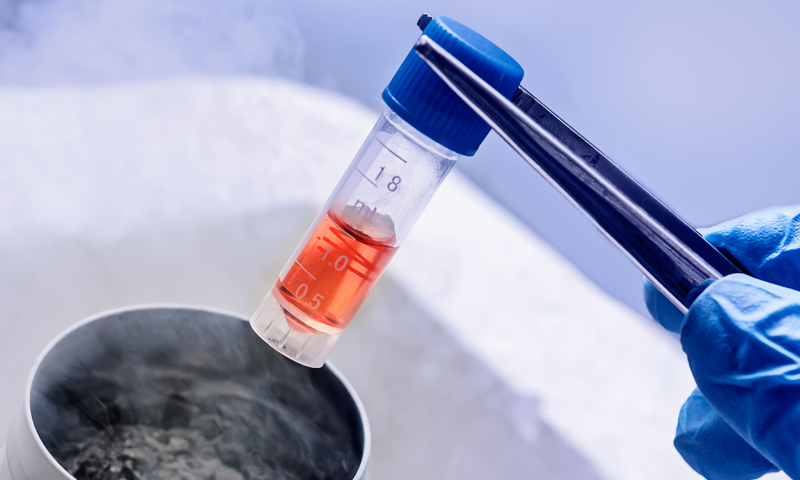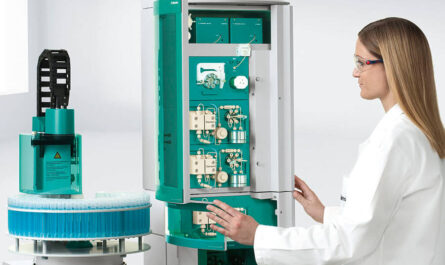Cell cryopreservation is a technique used to preserve living cells and tissues by cooling them to very low sub-zero temperatures. At low temperatures, any biological activity, including cell division and enzyme actions, gets slowed down dramatically as the cells approach the frozen state. The cells are preserved by cooling them slowly and storing at very low temperatures, typically liquid nitrogen temperatures of -196 degrees Celsius.
History and Development of Cell Cryopreservation
The possibility of cell cryopreservation had been explored since early 20th century but it was in 1949 when Polge et al successfully cryopreserved ram sperm using glycerol as a cryoprotectant that established cell cryopreservation as a practical procedure. In the following decades, cryopreservation techniques were refined and various cell types like red blood cells, platelets, embryos were successfully frozen and stored for future usage. By the 1970s, research in mouse and human embryonic stem cell cryopreservation led to the development of specialized protocols required for preserving these unique cells. Today, cell cryopreservation has become an important tool in various scientific fields including medicine, biotechnology and agriculture.
Fundamentals of Cell Cryopreservation Process
Cell cryopreservation involves several key steps –
1. Cryoprotectant addition: Cell Cryopreservation agents like dimethyl sulfoxide (DMSO), glycerol, ethylene glycol are added to protect cells from damage during freezing and thawing. These penetrate cell membranes and reduce formation of intracellular ice crystals.
2. Slow cooling: Cells in cryoprotectant solution are cooled slowly at around 1 degree Celsius/minute to avoid chilling injury and allow cryoprotectants time to penetrate cell membranes fully.
3. Frozen storage: Cells are held in liquid nitrogen storage tanks at temperatures below -130 degree Celsius where they can be stored indefinitely.
4. Rapid thawing: For future use, cells are quickly thawed by warming them in a water bath just above their freezing point. Rapid thawing limits damage caused by prolonged exposure to low sub-zero temperatures during frozen storage.
5. Cryoprotectant removal: Cryoprotectants are removed from cells by dilution or dialysis after thawing so they do not remain toxic to cells.
Cell types commonly cryopreserved using optimized protocols include sperms, oocytes, embryos, stem cells, hematopoietic cells like red blood cells and preventive cancer vaccines. Cryopreservation allows long term storage and transportation of these precious cells and tissues.
Applications of Cell Cryopreservation
1. Fertility preservation: Sperm, egg and ovarian/testicular tissues banking is a major application of Cell Cryopreservation. It allows cancer patients to preserve their fertility before starting chemo/radiations which may cause infertility.
2. Stem cell banking: Umbilical cord blood banking for future autologous or allogenic stem cell transplant is now a large industry worldwide. Adult stem cells from fat, bone marrow etc are also cryopreserved extensively.
3. Tissue engineering: Cryopreserved viable cells form an important source for emerging fields like regenerative medicine, organ engineering while also allowing establishment of “bio-banks”.
4. Agriculture: Germplasm conservation involving freezing of animal semen, embryos, oocytes; cryopreservation of plant cells, pollen, seeds and genetic stocks is backbone of animal and plant breeding programs globally.
5. Research: Freezing viable cells and tissues for future “batch” experiments, validation studies has been a boon for reproducible research. Cell line repositories have facilitated access to standardized cell resources globally.
Challenges in Cell Cryopreservation
While great progress has been made, some cell types remain harder to cryopreserve than others due to complexity of their membrane structure, presence of intracellular ice crystals on freezing or cryoinjury during thawing. A few challenges include:
1. Slow freezing injury: Cells sensitive to slow cooling rates undergo osmotic and oxidative stress during gradual addition of cryoprotectants and decline in temperature.
2. Vitrification: New approach of ultra-fast freezing Cells by direct plunging in cryogenic storage without ice formation is being explored to overcome the problem of ice crystal formation. But more research is still needed to refine this approach.
3. Cryopreservation of organoids and complex tissue: Cryopreservation of 3D tissue constructs containing multiple cell types interconnected by extracellular matrix is far more complex compared to single cell suspensions. Establishing standardized protocols require extensive research.
4. Cryoinjury during thawing: Cells may undergo additional injury when exposed to sudden temperature rise during thawing defeating the whole purpose of cryopreservation. Gentle yet uniform thawing protocols need further optimization.
5. Suboptimal post-thaw cell survival and recovery: Not all cells may survive the freezing-thawing process. Post-thaw assessment methods and culture techniques to maximize cell recovery also need refinement.
6. Cell phenotype and potency maintenance: Cryopreservation process may induce subtle phenotype and potency changes in few cell types which needs characterization before clinical usage. Long term effects also require evaluation.
*Note:
1. Source: Coherent Market Insights, Public sources, Desk research
2. We have leveraged AI tools to mine information and compile it


